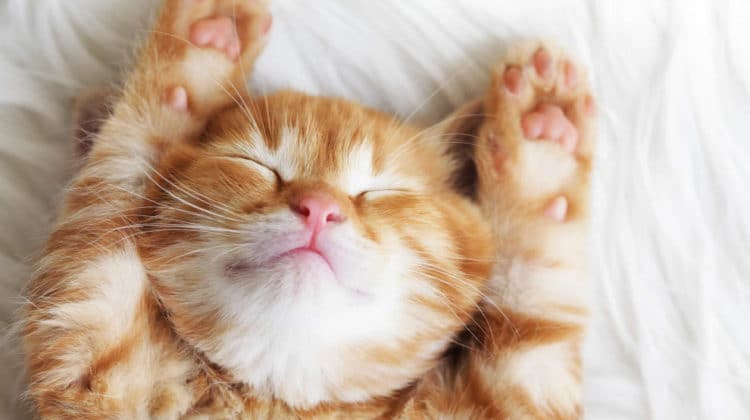
It’s no secret that cats love to nap.
The average cat sleeps around 15 hours every day, whereas some older and lazier felines will happily kip for a whopping 20 hours. Cats also love sleeping in a whole load of contorted positions, many of which look extremely uncomfortable!
However, lethargy is also a sign of sickness and depression. Like humans, cats will sleep more frequently and have less energy when they’re ill than when they’re fit and healthy. Cat sleeping positions when sick can also help identify any underlying issues or feelings of discomfort, so it’s essential we pay attention to how our cats are sleeping.
But how do cats lay when they’re sick? An unwell cat may use several sleeping positions when sick, which are also common in healthy cats. Because of this, it is important to look out for any other signs of pain or illness as well. The exception to this is the cat meatloaf position. Healthy felines rarely sleep this way, so this can be a sure sign of illness.
In this article, I will run through some common cat sleeping positions and what each of these could mean for your cat’s health. I’ll also go through some other signs of pain and sickness. This way, you can ensure your kitty is treated quickly and back to her usual self in no time!
Cat Sleeping Positions When Sick
Cats love bending their bodies into all kinds of positions! I can’t be the only one who marvels at my kitty’s strange sleeping choices. From having their legs behind their head to sitting in a loaf position, their flexibility and funny quirks are what make them so adorable.
Unfortunately, not all positions are a good sign. Below is a list of all the worrisome cat sleeping positions that could indicate pain or sickness.
1. Curled Up In A Ball
One of the most common positions you may see your cat sleeping in is curled up in a ball. This is one of the coziest sleeping positions and is definitely one of my cat’s favorite ways to sleep. By curling up, it is easier for cats to keep warm as they tuck their paws and ears close to their bodies, which is where the majority of their body heat is lost.
Another version of this is the fetal position. In this version, your kitty’s head will also be tucked into its chest so that they are curled into a tighter ball. This way of sleeping not only helps cats to stay warm, but it can also help to protect any injuries your feline may have sustained.
While these sleeping positions are not always a sign of pain or illness, they could indicate that your feline’s body temperature has dropped. Cats have a higher core body temperature than humans (roughly 100 degrees Fahrenheit) and cannot regulate their temperature as easily.
If a cat is too cold, it can lead to hypothermia; a cat’s body temperature will continue to drop until its body completely shuts down. They then may have to go into a coma or, in worst-case scenarios, die. Therefore, you must warm your cat up before the hypothermia kicks in.
To tell if your cat is struggling to keep warm, check your thermostat is set to an appropriate temperature. What temperature do cats like? Well, this depends on your cat’s breed, size, age, and health condition. That being said, as a general rule of thumb, you should try to keep your house at a temperature of at least 60 degrees Fahrenheit.
2. Sleeping On Your Chest
Many owners are flattered when their cat comes to sleep with them, myself included! When there’s a cat sleeping on my chest, I feel so loved and touched that my feline wants to curl up with me. However, this can be a worrisome sleeping position.
Just as curling up in a ball could indicate that your cat is cold, so could sleeping on your chest. Our bodies give off heat, so laying on our chest is comparable to a cat curling up next to a radiator or in a sunny spot in your home.
As cats are drawn to the warmth, this isn’t a definite sign that your cat is struggling to keep warm, but check the temperature of your house and help your cat warm up if you think they are at risk of developing hypothermia.
Unfortunately, this sleeping position could also be a sign that your kitty wants protection while sleeping. Many felines also exhibit this behavior with other cats in their household. However, your cat will only do this if they are seriously ill, as admitting their vulnerability to another cat would make them less dominant.
3. Flat On Their Back
Many owners think that when a cat lies on its back, it is a sign that they are comfortable with you. If your cat is always affectionate, then this is probably the case. However, cats can also sleep in this way so that their claws and teeth are in the best position to protect themselves. This will be a high priority for any kitty that feels vulnerable.
Moreover, a cat could also be lying outstretched on its back as they are too warm, and this posture helps them to lose heat and cool down. My cat often does this in the summer when she finds a patch of sun.
If a cat’s body temperature gets raised too much, it could develop heatstroke. This type of hyperthermia can cause your cat’s heart rate and breathing to quicken, potentially leading to coma and death.
Alongside sleeping in a stretched-out position, cats with heatstroke will also have red gums, may start panting in an attempt to cool themselves down, and will often become much more tired as they near exhaustion. They will also suffer from sickness and diarrhea.
If you notice your cat getting too hot, help them cool down by lowering the temperature in your home, ensuring they have plenty of water nearby, and stroking them gently with a damp towel. If there is an onset of sickness and diarrhea, you’ll need to arrange an emergency appointment with your vet.
4. Cat Lying Flat On Stomach
When a cat lies flat on its stomach with all four paws outstretched, this is known as splooting. This is more commonly seen in dogs, but cats can occasionally lie in this pose too. It feels great to them as their hip joints can be stretched out and looks adorable too!
Aside from easing any muscle tension, another reason cats sploot is to cool themselves down. Having their flat stomach pressed flat against a cold surface such as a hard floor can help cats handle the heat on a hot summer’s day.
However, as with cats lying flat on their back, it is essential that you look out for signs that your cat is getting too hot. If they are too warm, help them to cool down before they develop heatstroke.
5. Cat Loaf Position
In the cat loaf position, a cat lies on its belly and tucks its front paws underneath its body, resembling a loaf of bread. When cats sleep in the loaf position, it’s usually a good sign. Tucking their paws underneath their bodies, makes them more vulnerable as it is more difficult to get away if a threatening situation develops. Therefore, it’s a sign your cat is comfortable.
However, this position does allow your feline to remain more alert and could also signal pain, specifically in their paws. If your cat is feeling pain or discomfort in its paw, it could tuck it underneath its body as a way to protect it. Common paw problems include ingrown claws, wounds, or small objects stuck in the paw.
To determine the exact issues, you need to inspect your cat’s paws. However, wait until your feline has woken up. I know my cat is not alone in hating when someone pulls her paws out from underneath her!
6. Paws Outstretched
When sleeping on their bellies, cats often stretch their paws out in front of them in a typical “flying” position. As with most other positions, this way of sleeping does not always mean that your cat is ill. My cat often sleeps like this, but I know it is because she finds it comfortable, not because of any underlying health issues.
When a cat sleeps in this position and their paws are spread apart, it can indicate that your kitty is feeling vulnerable: the separated paws mean they can make a quick escape if they are threatened.
Sometimes, a cat’s paws may also be positioned next to each other when outstretched. Although there is some speculation around the suggestion, some people claim that this could be a sign of breathing problems as the position may help to open up the lungs.
7. Cat Meatloaf Position
The cat meatloaf position is a variation of the loaf position in which your cat is hunched forward with its back arched upwards and paws underneath its body. They will be leaning forward and sleeping with their head down and their chin on the floor.
All the positions I have mentioned already could indicate sickness and pain, but there is also a good chance that your cat just wants to get cozy and feels comfortable. However, the meatloaf position is not like this. If your cat is in the meatloaf pose, they almost definitely need medical attention as a dying cat often favors the meatloaf position.
This pose could signal that your cat is suffering from feline chronic kidney disease (CKD). In CDK, your cat’s kidneys will stop functioning as they should normally. This may also cause your kitty to become lethargic and have an increased water intake.
Older cats are more likely to suffer from this condition, and unfortunately, there is no cure for the disorder. However, a trip to the vet is a must! Your vet will be able to test for CKD and let you know how to manage it effectively to reduce pain and any further complications.
8. Lying On Their Side
When a cat lies on its side, it is typically a good thing. They aren’t curling up, so they must be at a good temperature, and feel confident and relaxed around you, as side-sleeping is one of the most vulnerable postures for a cat.
However, if your cat is stretched out on its side, it may have muscle pain or difficulty breathing. Curling up into a ball or lying on their stomach could compress their lungs and make it harder to breathe, whereas stretching on their side makes it easier to inhale and exhale.
If your cat is finding it hard to breathe, you will be able to hear them wheezing, and their breathing will be loud and deep. They may also pant if they struggle to breathe through their nasal passages, have trouble accessing their litter box, or be much less active than normal.
If your cat is lying on its side while showing any of these symptoms, arrange an appointment with your veterinarian.
9. Sleeping With One Eye Open
You might see your cat sleeping with their eyes open. This seems strange to us, but cats are both predators and prey in the wild and need to be constantly alert, even when they’re napping. The presence of a transparent third eyelid means they can keep an eye on what’s going on around them in case they need to bolt but still have time to rest.
A variation on this is if your cat shuts one eye as they sleep. This is an even more intelligent ability of cats called unihemispheric slow-wave sleep. They shut off the half of their brain connected to the closed eye while the other half is still completely conscious and alert.
However, your cat could be sleeping with one eye closed not because they are cleverly resting half of their brain but because they have an eye infection or other eye condition that makes it painful to keep one of their eyes open. You’ll know if this is the case as your cat will keep one eye closed for the entire day, not just while they sleep. Also, you’ll likely notice other signs such as excessive blinking, red and swollen eyes, or eye discharge.
Your kitty may also be keeping one eye open to prevent them from falling into a deep sleep. Cats suffering from breathing difficulties or urinary infections may use this technique so that they can monitor their breathing and get to the litter box quickly.
My cat has consistently kept one eye closed before, and I really panicked! Thankfully, my cat only had conjunctivitis, which is the most common feline eye infection and can easily be treated with antibiotics. However, other conditions include glaucoma, corneal ulcers, or uveitis, to name a few, which vary in severity.
If you think your cat has an eye condition, take them to the vet so that they diagnose the issue and prescribe effective treatment to ease the pain for preventing any further complications.
10. Always The Same Position
Cats like to sleep in a variety of positions. They could be found sleeping curled up in a ball, lying on their side, in a loaf position, or any other position imaginable! My point is that cats love variety, and will swap and change how they sleep each time. Therefore, if your cat is in one sleeping position at all times, it can suggest they are sick.
For example, if your cat sleeps curled up in a ball in the warmest spot in your house every single time, they are probably too cold and at risk of hypothermia. Similarly, if your cat is sleeping with one eye open constantly, they likely have an eye condition that needs looking into.
This means it’s not just a cat’s sleeping position when sick that is important; The frequency of these positions should also be closely monitored.
Other Signs of Sickness & Pain
Although it is important to be aware of cat sleeping positions when sick and what they mean, these so-called “sick cat sitting positions” by themselves don’t tell us all too much. We need to observe these positions and their frequencies alongside changes in behavior, body language, and other symptoms.
Here are some key things you can look out for that could show your cat is sick or in pain.
1. Change In Appetite
If you notice a change in your cat’s appetite when the food you give them and their feeding routine has gone unchanged, it could be a sign of sickness.
A sudden increase in appetite could be a sign of diabetes mellitus or hyperthyroidism. These are both usually accompanied by noticeable weight loss and excessive thirst. For example, my cat always seemed hungry but skinny when she was suffering from hyperthyroidism.
On the other hand, a loss of appetite isn’t a good sign either. This could be a sign of infection, intestinal issues, kidney failure, or cancer. Dental issues could also cause your cat pain when they eat, leading to a reduced appetite.
2. Increased Thirst
Cats naturally don’t drink much water, and many need encouragement to increase their water intake. So, if your cat is suddenly drinking excessively, this isn’t usual cat behavior and could be a sign of sickness.
As mentioned briefly, an increased thirst is another symptom of diabetes and hyperthyroidism. It can also be a sign of kidney disease. However, it may also just be that your kitty is a bit overheated and wants a refreshing drink. My cat often drinks more during the summer for this exact reason. If in any doubt, it’s always best to seek out your vet’s opinion.
3. Excessive Vocalization
Cats don’t typically meow for no reason. This form of vocalization is reserved exclusively for humans, and whenever your cat meows, it is because it is trying to communicate something to you. For example, my cat meows to let me know she is ready for her dinner.
Your cat meowing excessively could be their way of telling you that they are sick or in pain. You may also notice your cat purring for no apparent reason or growling and hissing at you and other members of your household. Get your cat checked by your vet if there is any unusual vocalization to determine the illness or injury that is sparking this behavior.
4. Personality Changes
Every cat has its own unique and wonderful personality. For example, some are confident and boisterous, whereas others are more timid. While it’s normal for all cats to be different, sudden personality changes should be taken seriously.
If your confident cat is suddenly hiding a lot more and being skittish, they are likely stressed out by some change to the environment. However, they could also be sick and feel a lot more anxious and vulnerable.
Increased aggression is another common sign that something is wrong. Your cat may growl and hiss at you or lash out and scratch you if you get too close, which usually signals that your cat is in pain. This behavior is supposed to deter you from picking them up, as by touching your cat, you could be making their pain worse!
5. Changes in Grooming Behavior
Cats love to self-groom and are known for being extremely clean creatures. So, when self-grooming stops, it’s a sure sign something is wrong. Commonly, a lack of grooming could just be because your cat feels slightly under the weather or stressed out. However, it could also be a sign of something more serious.
If older cats stop grooming, they may suffer from arthritis. This is where their joints will become swollen and stiff, so cleaning themselves could be causing them pain.
Lack of self-grooming could also indicate dental issues. Cats rely on their mouth and tongues to self-groom, so any dental issues could also lead to pain while grooming. Other signs of dental diseases include when cats rub their teeth on you or if your cat suddenly stopped eating dry food but still eats treats. You could also notice a reduction in appetite or bad breath.
6. Litter Box Issues
There is a range of litter box issues that could present themselves and an even bigger list of potential medical conditions or injuries behind these problems.
If your cat stops using their litter box, it could be that they suffer from arthritis, and climbing in and out of the litter box is causing them pain. If this is the case, you can opt for a low-entry litter box for your senior cat.
Similarly, if they have in-grown claws or have injured their paws, the litter may be uncomfortable to walk on.
Elderly cats could also suffer from dementia or other cognitive dysfunction and simply forget where their litter box is.
On the other hand, cats that use their litter box but have started passing urine much more frequently could be suffering from a urinary tract infection, kidney disease, hyperthyroidism, or diabetes. If they are barely urinating at all, there could be a urinary obstruction or cystitis.
7. Changes in Their Eyes
They say eyes are the windows to the soul, and for cats, it is no different. Your cat’s eyes show a lot of emotion and can tell you how they’re feeling. For example, their pupils will dilate when they are playing or feeling content.
Therefore, we can use our cat’s eyes to help identify pain, which is usually characterized by permanent wide eyes with dilated pupils. But are a cat’s eyes always dilated because they’re in pain? Unfortunately no, it could also be a side effect of medication or a sign of hypertension, anxiety, or ocular illness. Whichever the cause, it’s best to get it checked out.
There may also be several other eye changes in a sick cat, such as droopy eyelids, squinting and blinking excessively, or abnormal discharge from the eye. These are all often a sign of eye infections or conditions and should be looked at as soon as possible to prevent blindness.
8. Reduced Activity Levels
Lethargy in cats is often a sign of a problem. You may notice your cat sleeping more frequently or not being as playful.
Fevers, infections, or general sicknesses are the most common culprits. All your cat’s energy is going to its immune system, which is working hard to fight off the infection, so they simply don’t have the energy for other activities.
Another reason your cat’s energy levels have dipped could be pain. Arthritic cats will be less active as the moment of jumping and playing hurts their joints. Injured cats will also not move around as much and could appear in pain when walking or jumping. Look out for signs of limping and see your vet if needed.
CONCLUSION
As pet owners, we want to know when our cat is sick or in pain so we can help ease their suffering. One way to do this is to observe the positions they sleep in. However, cat sleeping positions when sick don’t differ that much from regular cat sleeping positions. The one exception is the cat meatloaf position – if your cat is regularly hunched over, it is usually a sign that they are seriously ill.
With this in mind, it is the frequency of these sleeping positions, alongside noticing other changes in cats’ behaviors and body language, that can tell us if our cats are in pain. Alone these things mean nothing but combined, they can make it easy to determine if your cat is happy and healthy or not.
If you notice anything out of the ordinary, take your cat to the vet for a check-up to restore your cat’s quality of life, happiness, and health.

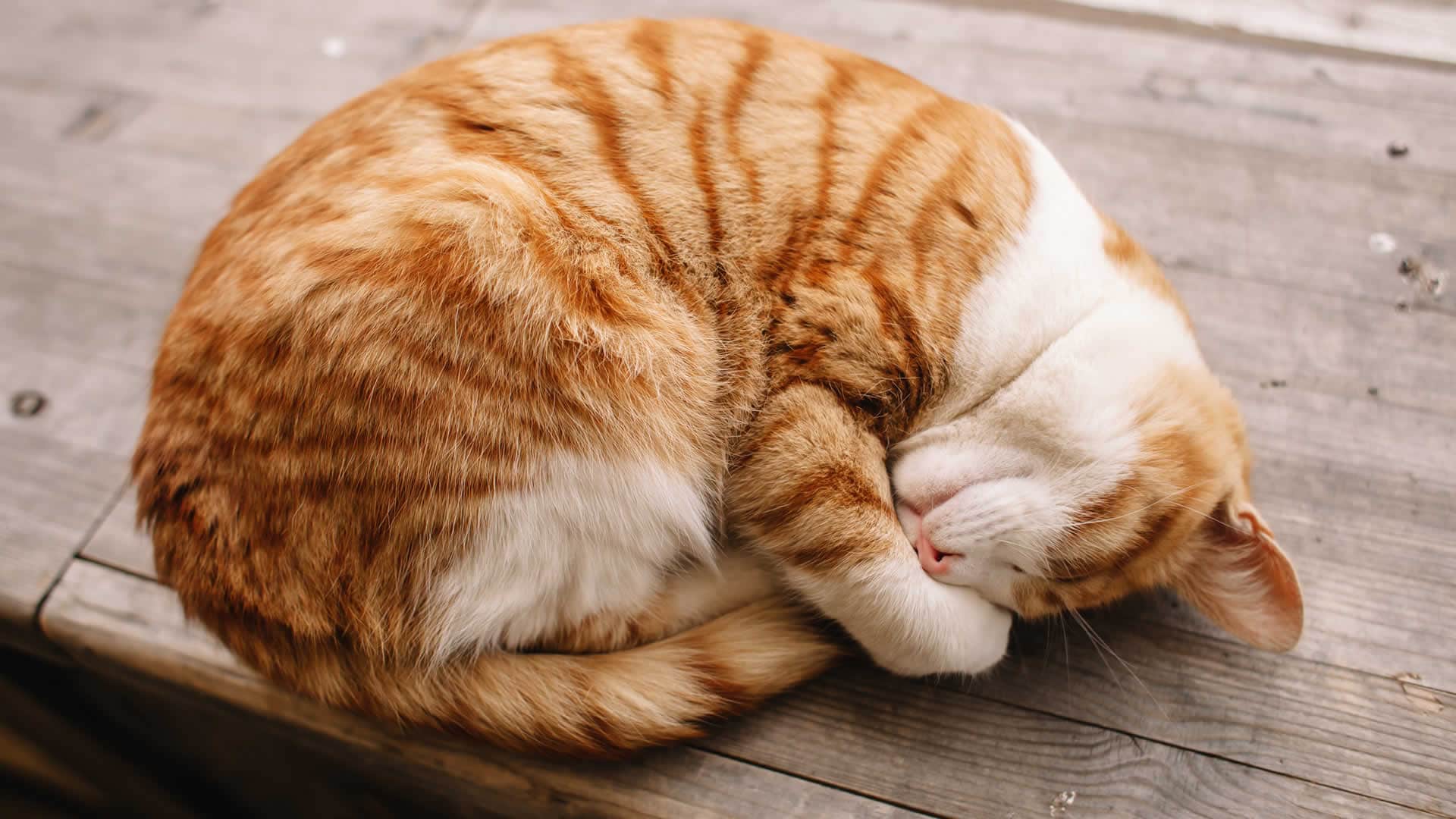
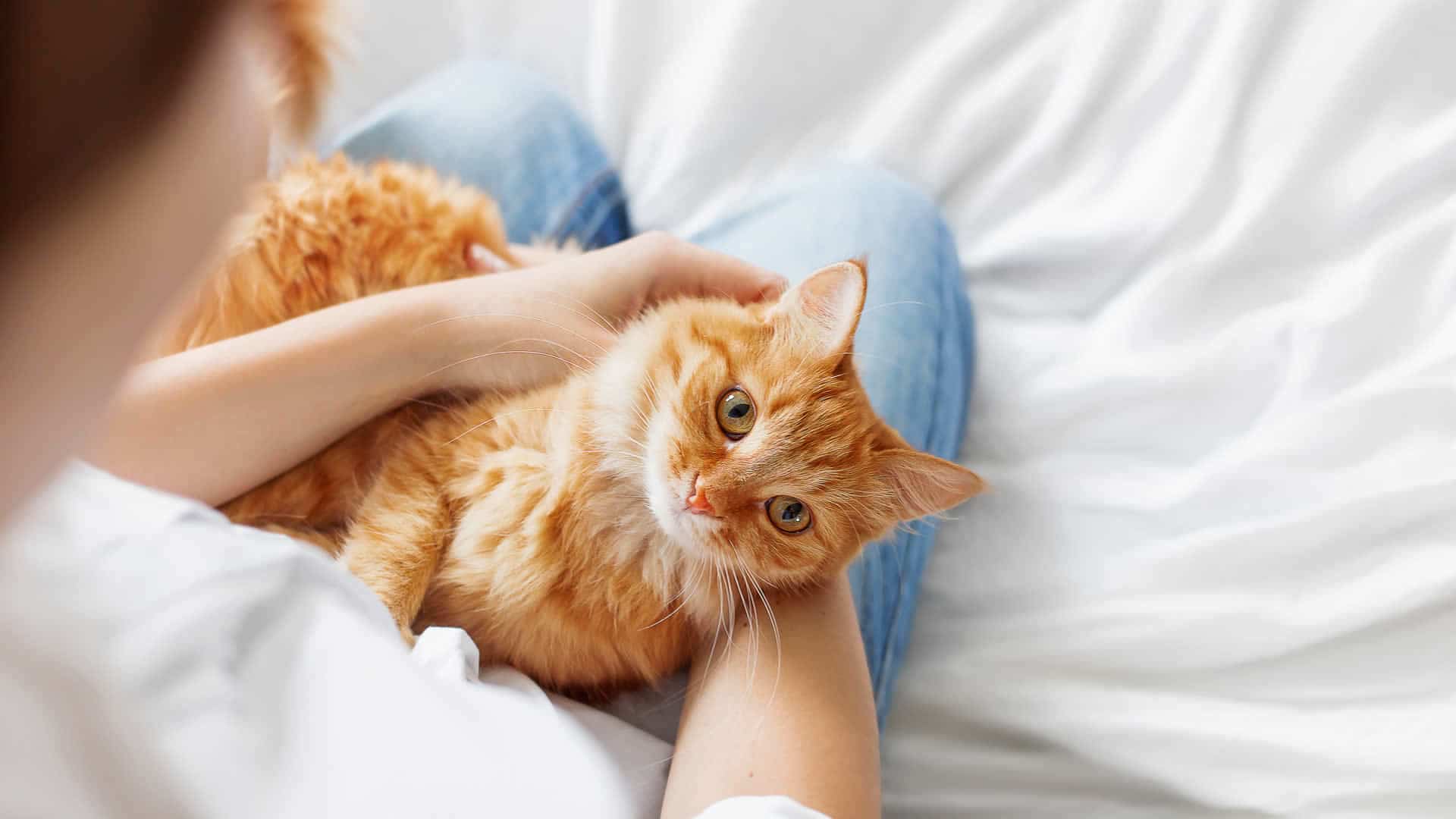
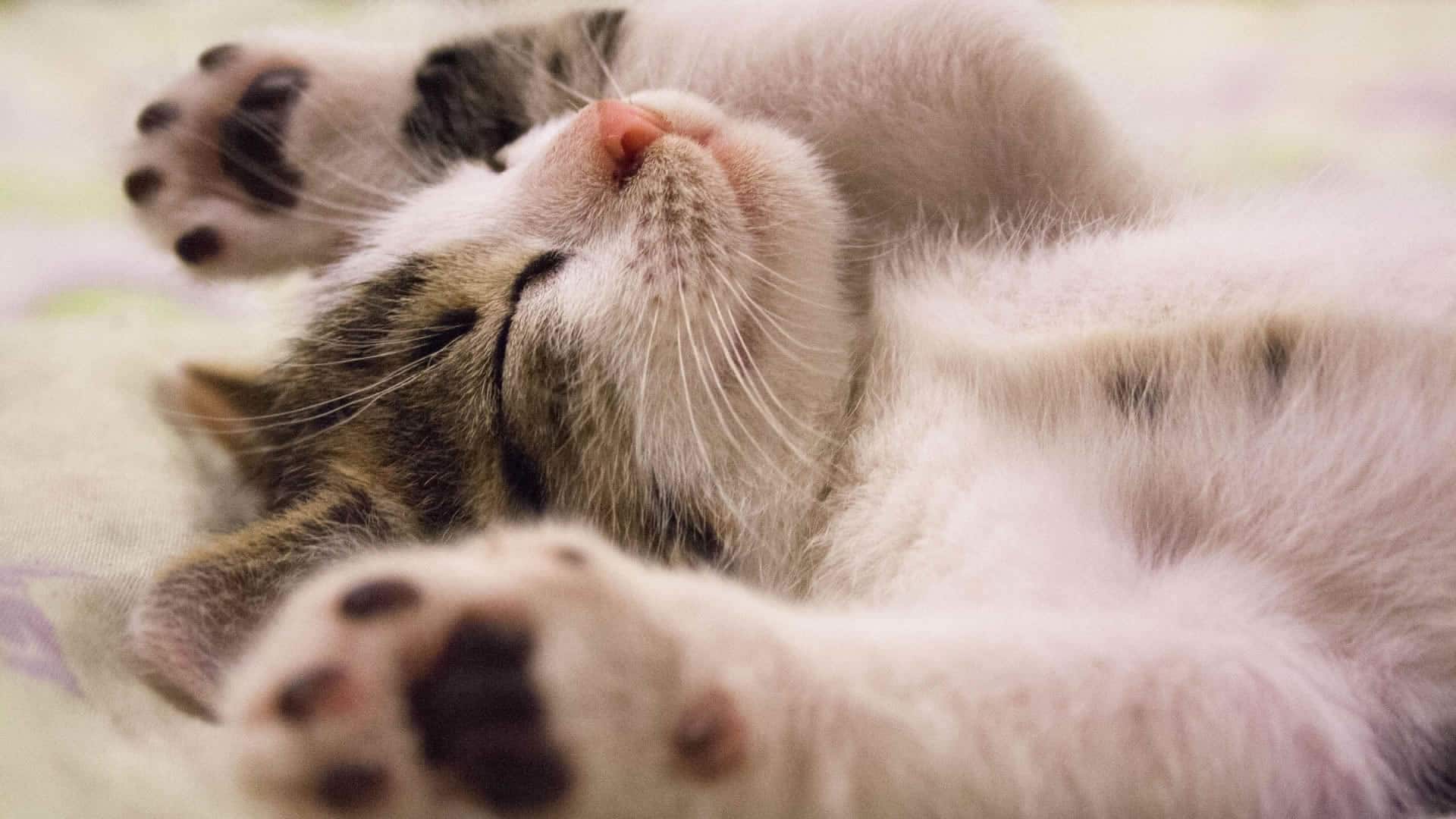
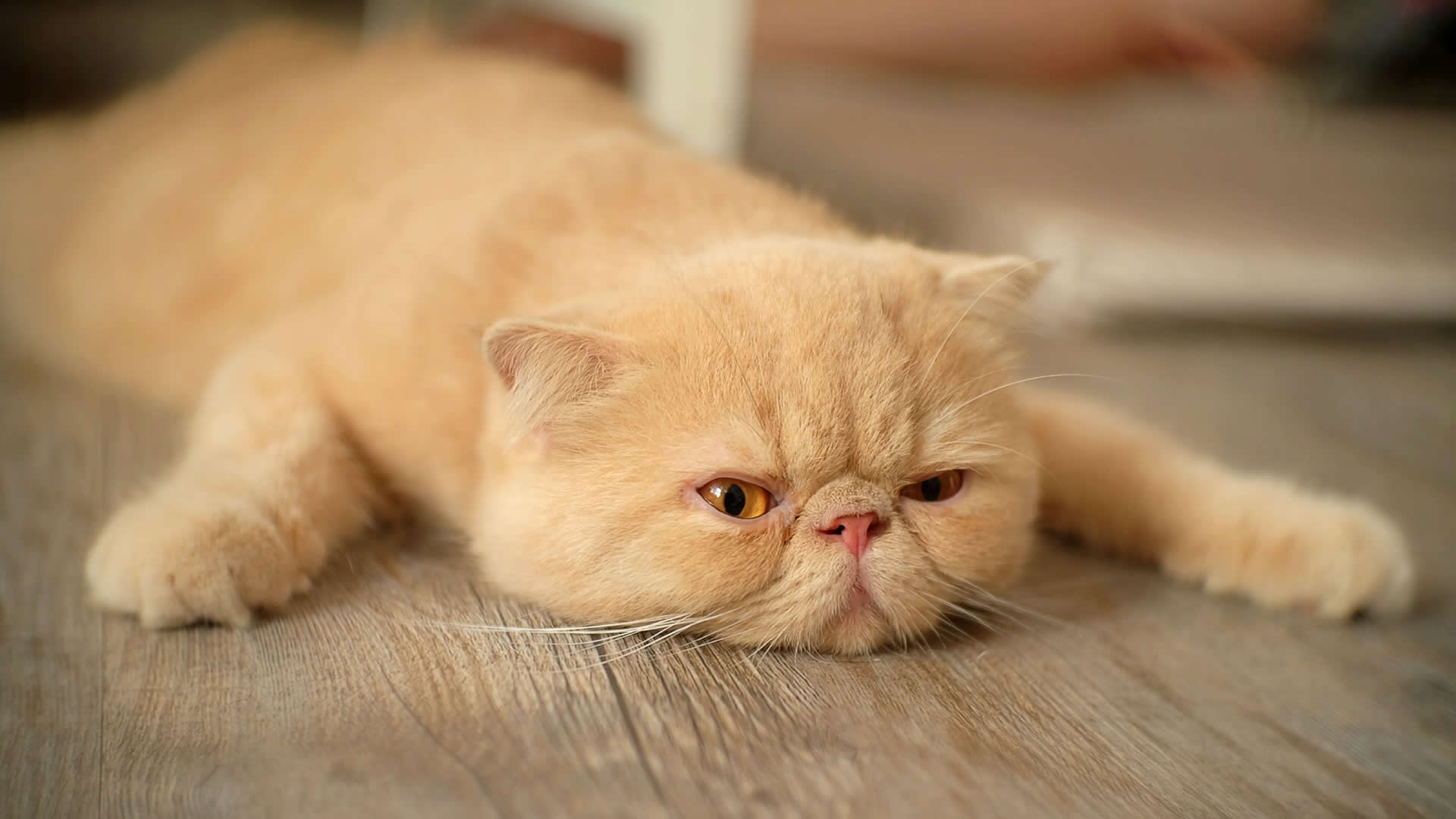
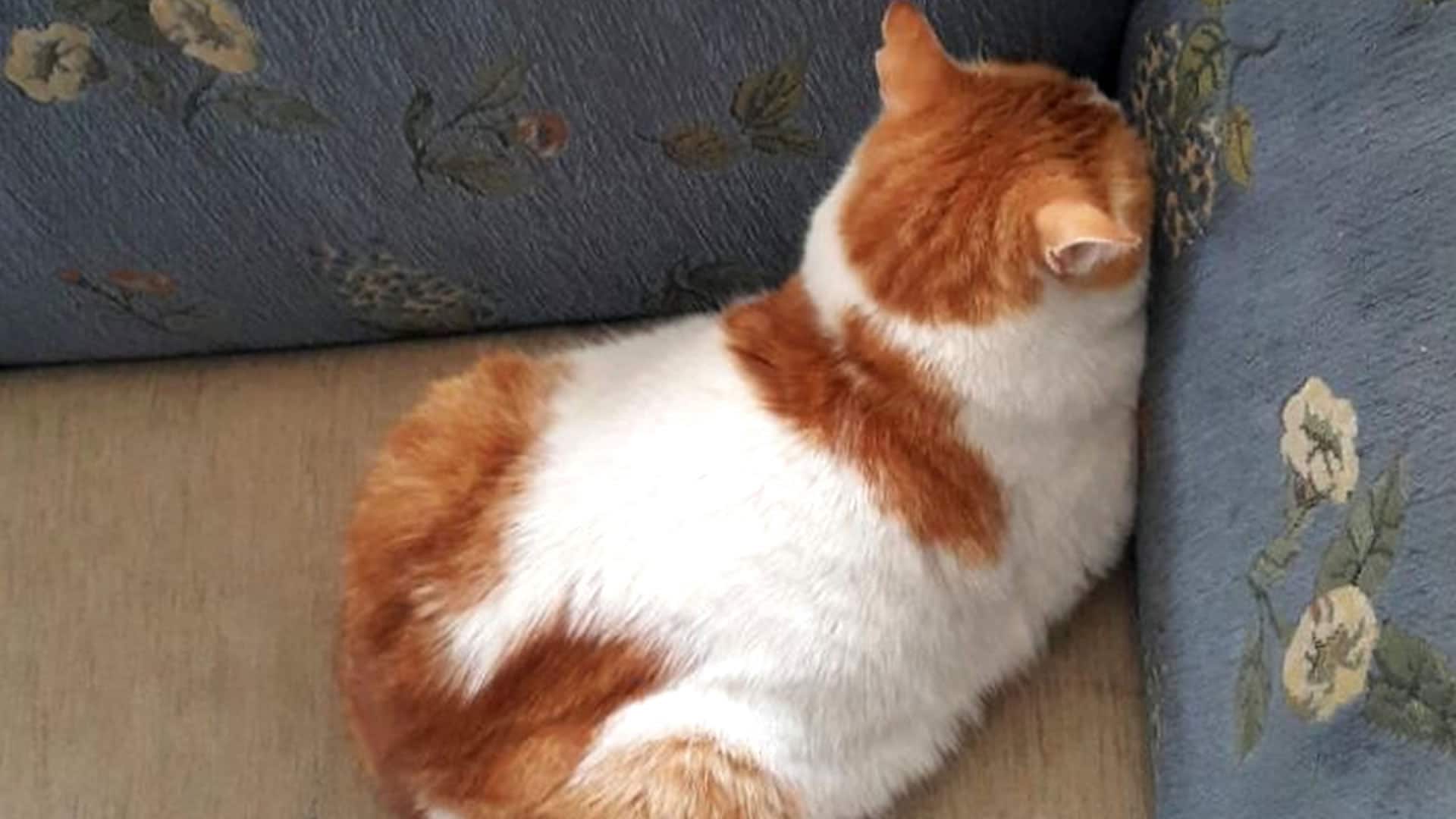
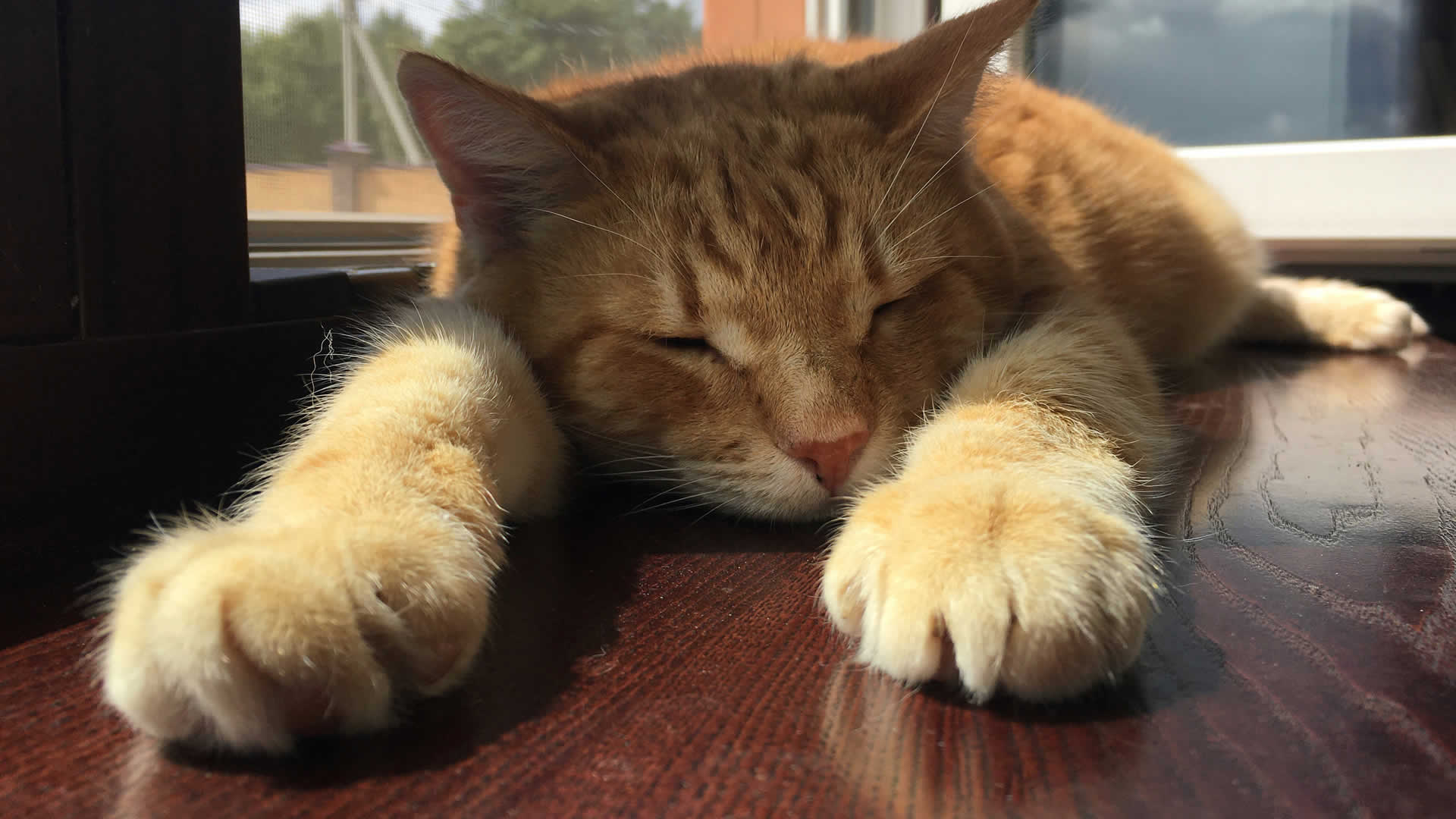
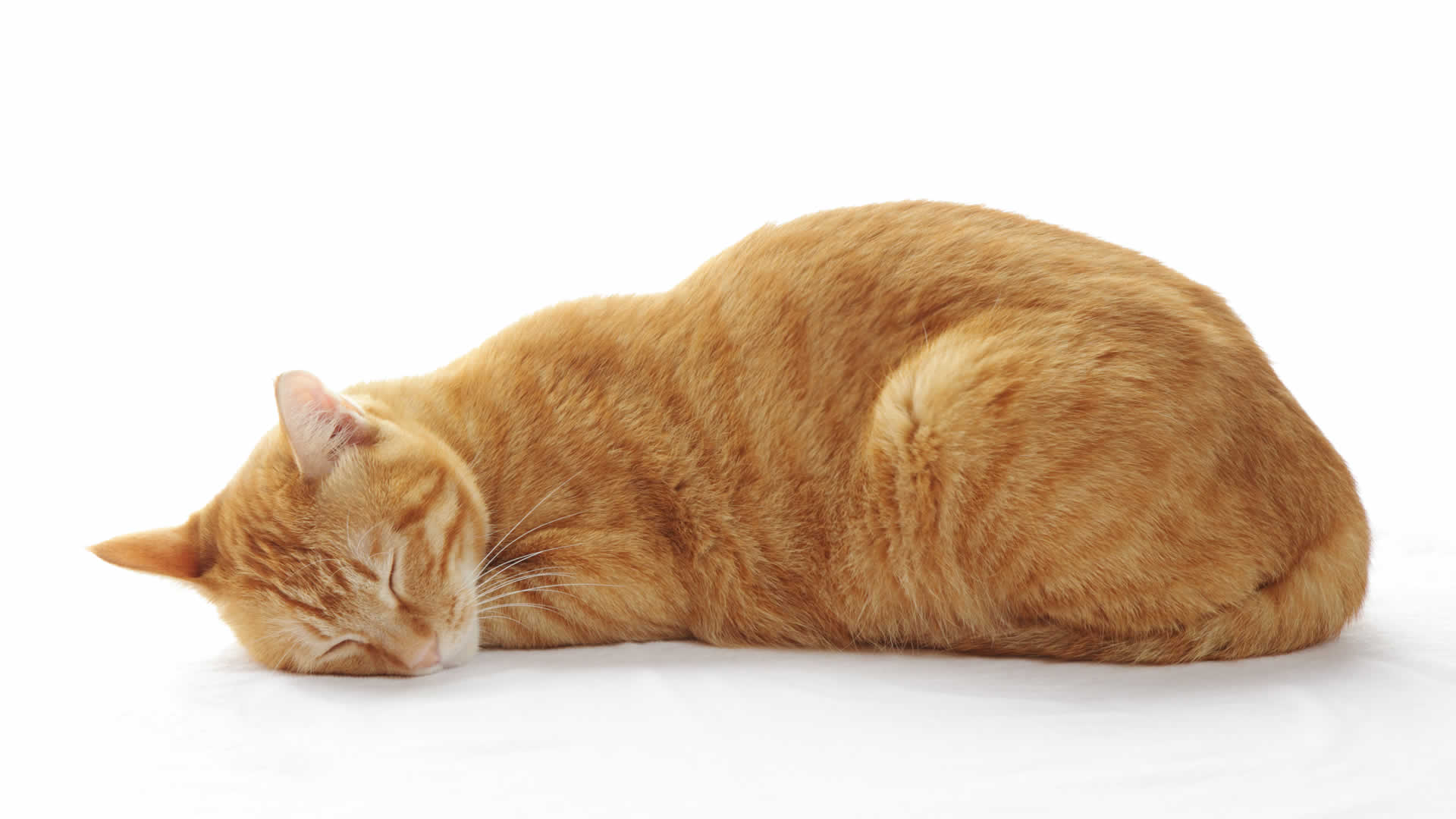
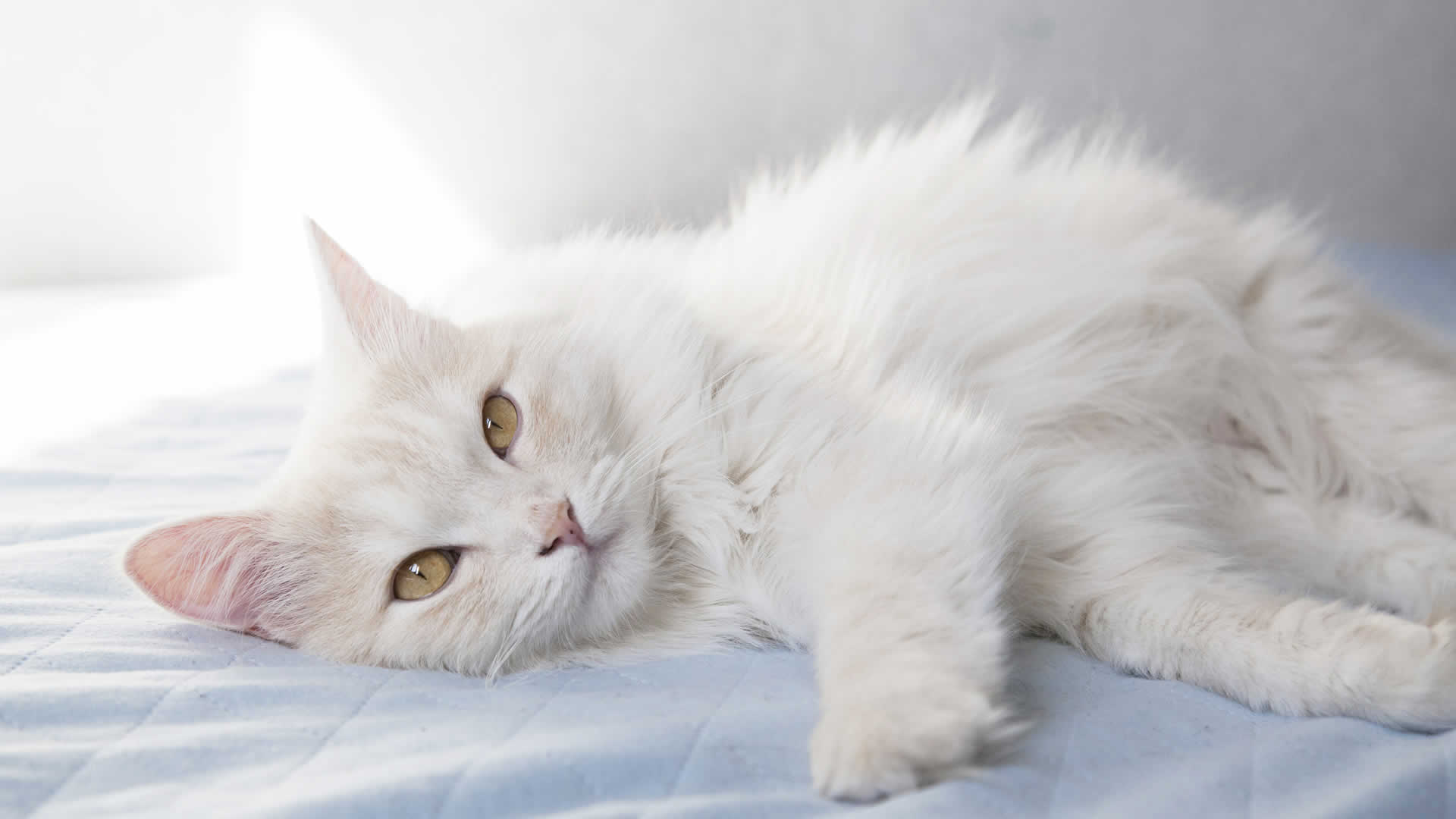
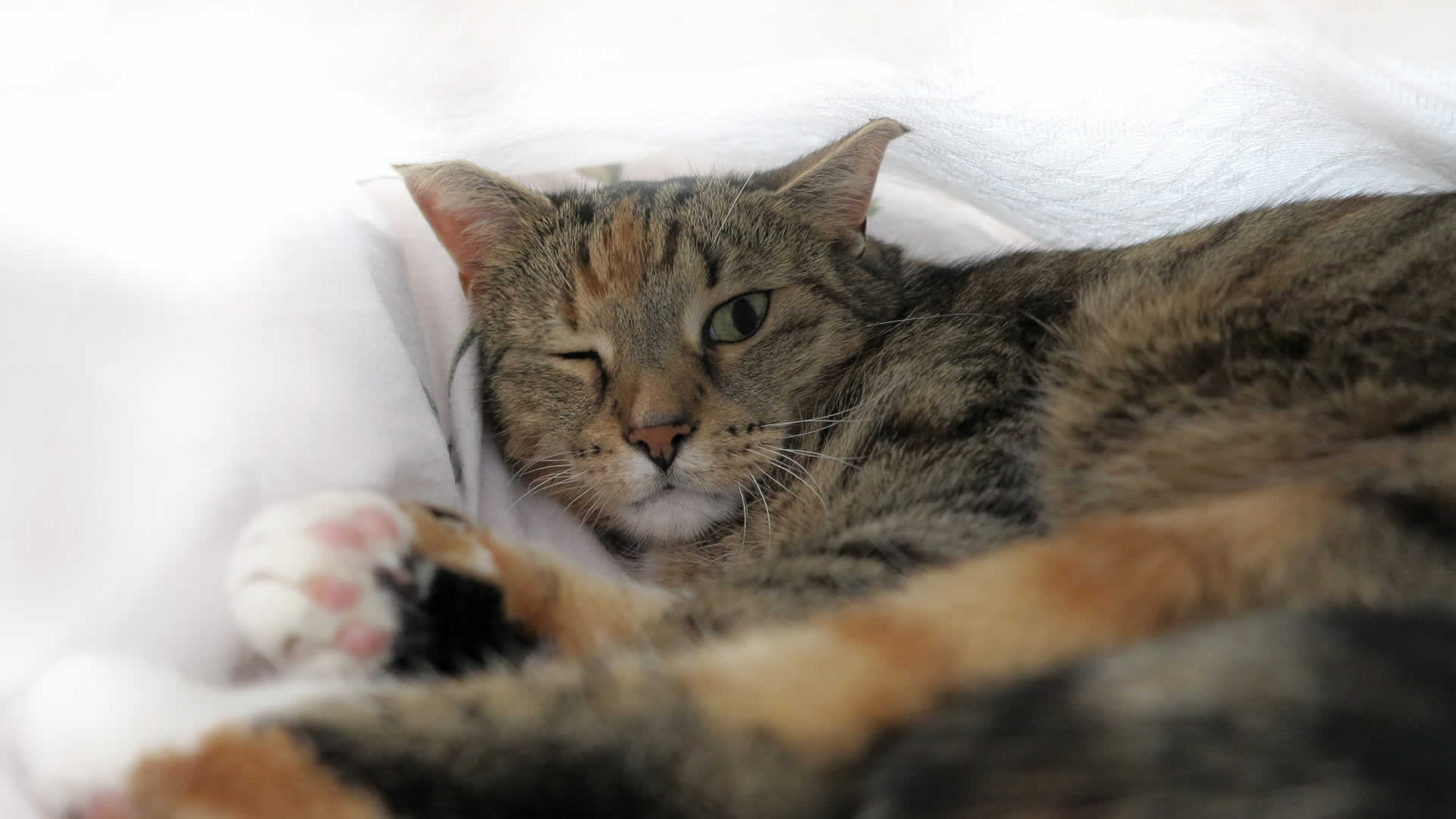
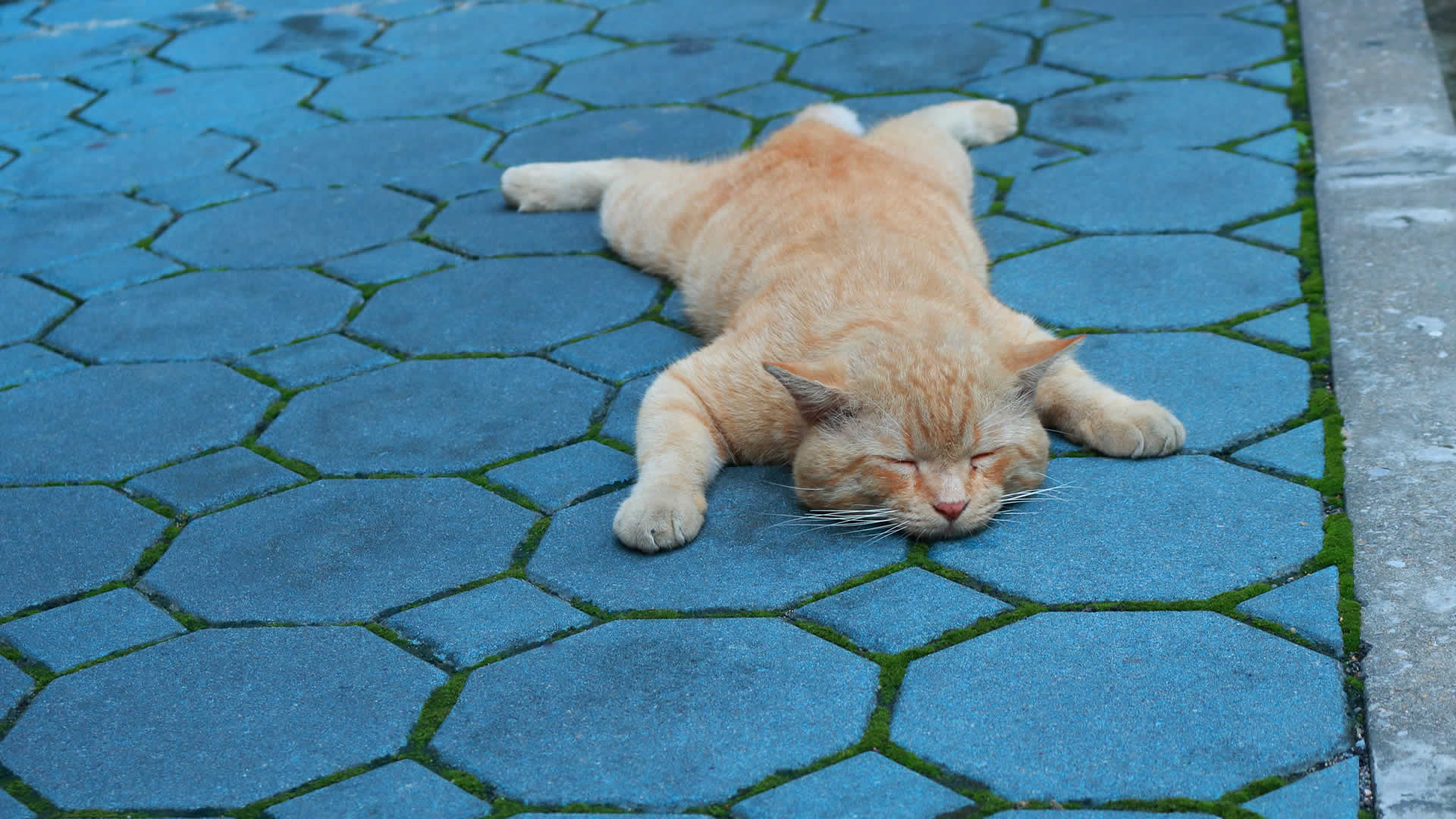
My cat Kippy is 8 1/2 years old, he is a pretty good size cat, he is orange tabby with long hair, I got him at 7 mos. Of age, he has been indoors cat his entire life, I take very good care of him, recently moved to a small studio apt. About 1 yr. Ago I’ve noticed he’s sleeping more often, after each meal he grooms and goes to sleep ,seems he sleeps after every activity, is he ok?
Kippy had changed some of his normal routine, sleeps on the microwave oven, just started doing that, doesn’t want affection, he always did he always used to sleep with me and knead my stomach, now hardly ever, I used to work 10 hours a day and he was fine, now I can’t leave him, he won’t stop meowing if I go.
I think that maybe Kippy is feeling insecure after the move to a smaller space. He probably misses you more due to that insecurity. Maybe hold him, love him and play with him more. He probably needs more of you until he feels more secure and realizes that you are coming home and you will be there for him. Afterall, YOU are his world since he is an indoor cat.
Thank you for your article. My cat was hunched and tucked his tail under his body when resting or in a tight curl. The vet found he had constipation. Recently I changed his diet to Royal Canin Fiber Response and He had it worse – very tiny balls. I gave him his medicine -lactulose, sometimes miralax and need to adjust down the dose – diarrhea today. He’s been tail tucking and seems to occur after he passes stool. – Can diarrhea cause tail tucking too?
My cat kittyboo is a little over a year old and she has been very sick lately. She’s had an increased appetite and thirst that started a month or 2 ago but then suddenly 2 days ago she stopped eating and drinking and laid in the “meatloaf position” where she didn’t really move until today. She ate a little yesterday and a little more today and she just started drinking on her own today. She also went outside for the first time today but didn’t interact with the other cats and just found a spot to lay in until I went and got her and brought her inside. She also seems to be congested and has been coughing when she tries to eat or be vocal. I can’t afford to take her to a vet so I’ve been making her as comfortable as possible at home. Could you please give me some kind of insight as to what you think it could be?
Hi, Tayla, I have no idea what might be going on with your cat, but a week has passed now and I’m wondering how kittyboo is doing?
Is it loosing weight? Let me tell you this could be a serious problem for your cat. ASAP you should make arrangements for blood test of your cat. We might take those symptoms lightly but it could lead to some of the serious diseases like kidney failure, diabetes etc. Dont be late otherwise you will regret in future.
My cat was recently given a lions cut (shaved except feet and head) and was neutered. Coming home he acted skittish. Kept twitching. His skin would move and he would hide away. After a few days this went away and he’s been his usual self until recently he is acting the same way. I’ve checked him over and he doesn’t seem to have any visible cuts or scratches. He seems to react more near his tail and thighs. He’s always in the ‘meatloaf’ position but hiding his paws. Eyes wide and pupils dilated. No problems with appetite. Appetite is regular. He reacts suddenly to himself and begins to quite aggressively lick himself so?
As far as the twitching skin, followed by excessive licking/biting his nails, jitter, my cat has been doing the same for years. He is hyperthyroid and after some time of medication it lessened a great deal. I believe this is a condition called hyperesthesia. my cat was prescribed alprazolam for extreme cycles and only for short time. His flare ups include visible rolling skin/spasms that ignite him to suddenly dart off, caterwaul, over-groom, bite/pull his nails, stare at something (that isn’t there) and run away frantically. Excetera, the symptoms seem to be cyclical. I’d ask your veterinarian if this may be what your cat is experiencing. Also, From what I’ve read, the condition often accompanies hyperthyroidism and can be initiated by a traumatic event or new living situation.
My cat purdy is 14 yrs old, we sadly lost her son Dec 9th last yr. She has plenty of toys/a climbing tree/scratch posts etc. Each cat has there own individual bowl at meal times.
I have 4 cats purdy maisy mikeo & shiva (2 girls & 2 boys). Since we lost tiger in dec purdy has vocalized more she announces when she used her tray & often just walks around crying for no reason.
This past month I noticed bald patches on her back near where her tail joins the spine. She goes off her meat but eats a diff brand but not as much as she did b4 her son passed away to cancer. She’s over-grooming then sometimes is sick other times no sick. She is skittish and jumps at the least little thing & goes into hiding out the way sometimes in places id rather she didnt go for her own safety. She’s eating both wet & dry food & drinking water & using the litter tray.
But her hiding & over-grooming is not how shes been. I’ve put flea stuff on all 4 (not bob martin) and wormed them also. I’ve tried her with hemp oil to ease any anxiety/depression/pain. Could she be missing her son tiger who she had at 8 months old so he’s been with her most of her life & if so what is my next step? I don’t really want to stress her out further by taking to the vet where she will spell other animals & stress her further but I will if I have too. But any ideas are welcome at this time.
How is Purdy, Tina?